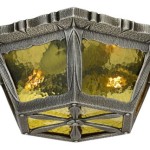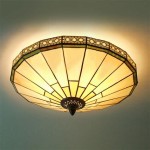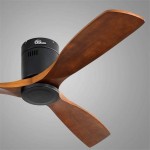Essential Aspects to Consider for Best Recessed LED Ceiling Lights
Recessed LED ceiling lights have gained widespread popularity in both residential and commercial settings due to their energy efficiency, versatility, and sleek aesthetics. Choosing the right recessed LED ceiling lights can significantly enhance the ambiance of your space while ensuring optimal lighting. Here are some essential aspects to consider when selecting the best recessed LED ceiling lights for your needs.
Light Output and Color Temperature
The light output, measured in lumens, determines the brightness of a light fixture. Consider the size of the room, the desired level of illumination, and the purpose of the space when selecting the lumen output. Color temperature refers to the warmth or coolness of the light emitted, and it is measured in Kelvins (K). Warmer light (2700K-3000K) creates a cozy atmosphere, while cooler light (4000K-5000K) promotes alertness and concentration.
Beam Angle and Distribution
The beam angle determines how widely the light is distributed from the fixture. A narrow beam angle concentrates the light in a specific area, while a wide beam angle provides more diffused illumination. Consider the desired lighting effect, the ceiling height, and the spacing of the fixtures when choosing the beam angle.
Trim and Baffle Design
The trim and baffle design affect the overall appearance and functionality of the recessed LED ceiling light. The trim, which surrounds the fixture, is available in various styles, finishes, and materials. The baffle, which is located inside the fixture, helps control glare and direct the light. Choose a trim and baffle design that complements the decor of your space and meets your lighting needs.
Wattage and Energy Consumption
The wattage of a recessed LED ceiling light indicates the amount of electricity it consumes. LED lights are known for their energy efficiency, consuming significantly less energy than traditional incandescent or fluorescent lights. Choose a wattage that provides sufficient light output while minimizing energy consumption.
CRI and Dimmability
The Color Rendering Index (CRI) measures how accurately a light source reproduces colors. A higher CRI results in more vibrant and accurate color rendering, making it essential for applications where true color perception is crucial. Dimmable recessed LED ceiling lights allow you to adjust the light intensity to create different moods and accommodate various activities.
Conclusion
Choosing the best recessed LED ceiling lights involves considering factors such as light output, color temperature, beam angle, trim and baffle design, wattage, energy consumption, CRI, and dimmability. By carefully assessing these aspects, you can select the ideal recessed LED ceiling lights that enhance the ambiance, functionality, and energy efficiency of your space.

Choosing The Best Led Recessed Lighting What You Should Know Blog

Choosing The Best Led Recessed Lighting What You Should Know Blog

Recessed Lighting Guide The Home Depot

Recessed Lighting Guide The Home Depot

Recessed Lighting Guide Lowe S

Choosing The Best Led Recessed Lighting What You Should Know Blog

Recessed Lighting Guide The Home Depot

Led Recessed Lights Best Ceiling Lighting

The 8 Best Led Recessed Lights Reviews Guide Electronicshub

Choosing The Best Led Recessed Lighting What You Should Know Blog
Related Posts








